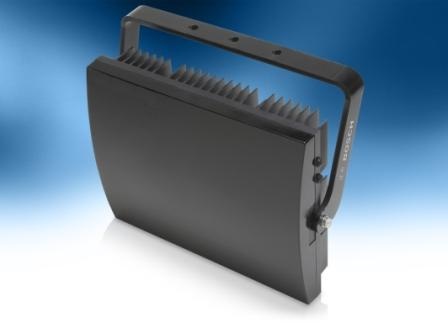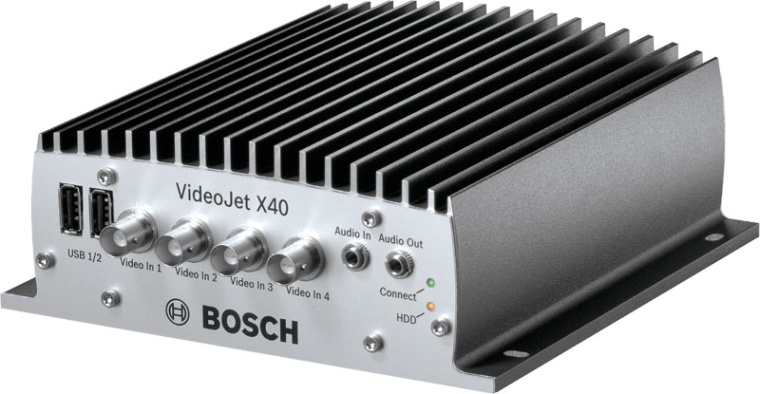Using Infrared Illumination in an IP Surveillance Environment
There is a simple premise that impacts the performance and effectiveness of any camera installation: if there is no light, there can be no picture. But since today's security syste...


There is a simple premise that impacts the performance and effectiveness of any camera installation: if there is no light, there can be no picture. But since today's security systems require 24/7 operation, it is how a camera performs during the vulnerable hours of darkness that determines overall system effectiveness. Nighttime is, after all, the time when the vast majority of criminal activity occurs.
Ian Crosby of Bosch Security Systems discusses here the benefits of using infrared illumination in an IP surveillance environment, and in particular its positive effect on bandwidth management. Whether analog or IP (where encoding algorithms such as H264 encode the analog video for use on digital IP systems), virtually all CCTV cameras will produce usable surveillance images under well-lit daytime conditions. Many cameras today have very low lux ratings, often in the range of 0.1 lux.
While these camera's specifications will suggest effective operation under low light, it is generally accepted in the security industry that low-light environments result in ‘noisy', low-quality images. When light levels decrease, there is a corresponding increase in the demand for bandwidth - often used synonymously with the term ‘bit rate' which is defined as the amount of space required by the network in one second. Generally speaking, and assuming all other factors are equal, nighttime imaging requires greater bandwidth than daytime imaging.
Gain Is Relative
To understand the reasons behind this higher bandwidth requirement in low light, we need to consider automatic gain control (AGC), a camera technology that increases signal strength under low light conditions. AGC works simply by amplifying the image; however, the effect of the amplification is an increase in the video signal, and also the subsequent ‘noise'. As a scene darkens, AGC is activated and image noise increases. The darker it gets, the more AGC increases in magnitude, and even more noise is created in the process. Eventually, the nighttime image is obscured by ‘snow' and graininess. Under these conditions, bit rates can be many times greater than the daytime bit rate for static, non-moving images. It is important to have a basic understanding of how compression algorithms work in order to understand why there is a rise in bit rate. The basic principle of compression is to eliminate superfluous information to reduce file size. All compression requires a compromise between image quality and file size. Higher compression ratios deliver smaller file sizes but lower quality images; conversely, lower compression ratios produce higher quality images but larger file sizes.
Light Snow
Today's popular compression engines typically incorporate JPEG, MPEG or M-JPEG. Most current, of course, is the new H264 algorithm that uses some 30 % less bandwidth than MPEG4 compression technology, which is itself 80 % more efficient than MJPEG. All, however, share common reduction principles: irrelevancy reduction which removes parts of the video signal not noticeable by the human eye, such as subtle color changes; or redundancy reduction which removes duplicated information either from the same frame or between frames, such as large uniform areas of color or stationary objects. Therefore, noise caused by AGC interferes with compression algorithms used in today's IP encoders. More precisely, compression algorithms interpret the ‘snow' and graininess of AGC-enhanced images as ‘useful' information (such as image details or motion) that cannot be reduced by either irrelevancy or redundancy. Consequently, nighttime images are less compressed and generally larger in file size. From this understanding, it is clear that there is a direct relationship between nighttime performance, compression and bit rates.
Combining IR with IP
At first, it seems that the quickest fix would be to disable AGC. The strategy would indeed reduce bit rate, but at the expense of image detail. Doing so would result in very poor - if not useless - nighttime images, and the whole purpose of installing CCTV cameras would be lost. The best solution to ensure effective nighttime performance of IP-based systems is to apply infrared illumination to a scene. Providing the camera with the right amount of infrared illumination will ensure that nighttime images are high signal, low noise. Under these conditions, AGC becomes unnecessary and compression algorithms within encoders, DVRs and other IP equipment work efficiently. In most applications, frame rates and resolution are typically altered to suit the application requirements. For example, if either network bandwidth or storage space is insufficient, a common strategy is to reduce the frame rate, reduce the resolution or both. However, there are disadvantages to this approach. Sacrificing frame rate and resolution results in low-quality ‘choppy' video that may miss critical moments in a security event. Additionally, low frame rate and resolution often defeat video analytics software. For high-level critical security projects, the better strategy is to upgrade storage and bandwidth capabilities to retain the integrity of the surveillance video.
Invisible light
The addition of active infrared replaces noisy nighttime images with high-fidelity night vision by providing ‘invisible' light for the camera to see. High AGC is not triggered and bandwidth requirements remain similar to day-time levels. When comparing the effects of infrared illumination from a low light scene (< 1 lux) to a scene well exposed to infrared illumination, tests have shown bit rate reductions ranging from 48 % to 91 %. The variation in magnitude of reductions may be attributed primarily to differences in ambient visible lighting levels. The results of these same tests reveal a clear trend of less pronounced bit rate reductions as the ambient lighting conditions became brighter, making infrared illumination less important in video bandwidth. What they show also is that infrared illumination can actually be used as a bit-rate reducing tool under low light conditions. At the most basic level, infrared illumination is light. Although invisible to the human eye - which would see a completely dark scene - infrared illumination is a form of light that modern surveillance cameras can use to create images. Precisely because it is light, infrared illumination prevents noisy images and subsequently the chain of events that cause high bit rates. Low-noise (or what can be considered high quality) images require significantly less bandwidth than noisy (low quality) images.
Although infrared illumination provides a field-proven solution for nighttime surveillance, its possible application in terms of bandwidth management may come as a surprise. But given that disk space is one of the most expensive components of CCTV security, that surprise will at least be a pleasant one, and indeed encourage risk managers to consider IR as an effective strategy for reducing storage demands in IP encoder applications.
most read

Integrated and Futureproof: Traka’s Next Chapter
Interview with Stefni Oliver on Traka’s Vision for the Future

GIT SECURITY AWARD 2026 - The winners have been announced!
GIT SECURITY AWARD 2026: The best safety and security solutions of the year - now an overview of all winners

Machine & plant safety: The winners of category A at the GIT SECURITY AWARD 2026
GIT SECURITY AWARD 2026: Machine & plant safety - an overview of the most innovative solutions

The Benefits of AI-based Video Surveillance Solutions for Sports Venues
Dallmeier Interview: Artificial intelligence Makes Stadiums Smarter

Five Questions with Intersec Saudi Arabia Exhibition Director Riham Sedik
Intersec Saudi Arabia 2025: Exclusive Insights with Riham Sedik, Exhibition Director










